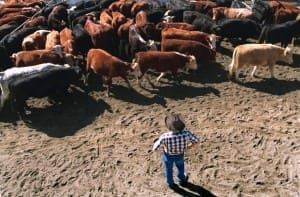RESEARCH released today by the Rural Industries Research and Development Corporation reveals how a return to collective bargaining can offer significant value for medium-sized agricultural businesses.
Released as part of a series of reports from RIRDC’s National Rural Issues program, the collective bargaining research will help drive a pilot program identified by the Australian Government’s Agricultural Competitiveness White Paper.
 The pilot, to be delivered by RIRDC, is currently being designed to provide knowledge and materials on cooperatives, collective bargaining and innovative business models to improve the productivity of Australian primary producers.
The pilot, to be delivered by RIRDC, is currently being designed to provide knowledge and materials on cooperatives, collective bargaining and innovative business models to improve the productivity of Australian primary producers.
“This new research supports policy directions for the future of Australian agriculture,” said Craig Burns, RIRDC’s managing director.
Through providing independent analysis and insights, RIRDC’s National Rural Issues program was designed to inform how policy is debated by Government and industry on national and global issues relevant to agriculture and rural policy.
Bond University’s Professor William van Caenegem, who led the collective bargaining research, said opportunities to collaborate existed for medium-sized farm enterprises, in particular.
“While a majority of Australian agricultural output is produced by the top 25 percent of farms, there is a real untapped opportunity for medium-sized operators to collaborate and increase the importance of their contribution to Australian agriculture,” Professor van Caenegem said.
The concept of collective bargaining was not new to Australian farming, with some of the country’s most successful agribusinesses today starting as farmer cooperatives. But for many reasons, cooperatives had been more prominent in some agricultural industries than others, Prof van Caenegem said.
Understanding why this was so and how and where farmers might achieve greater returns from closer collaboration beyond the farm gate was an important consideration for Australian agriculture.
Dr Jen Cleary, from the University of South Australia, who co-authored the report said the research showed that many large farm enterprises had the resources and skills to negotiate effectively on their own, while very small operators may have no inclination to change their practices, because of lifestyle and other socio-cultural factors.
“It is the groups that fall somewhere in between that may be most receptive to and who stand to gain most from collective bargaining,” Dr Cleary said.
“We suggest that particular forms of collective bargaining may work better in particular industries and regions. There is no one-size-fits-all formula. Collective bargaining could be achieved for example, through the development of contemporary cooperatives established for the sole purpose of negotiating contracts collaboratively.”
“We need to take a closer look at what will work best for Australian conditions and our markets. Our research has taken us some of the way down that path.”
Professor van Caenegem said it was hoped the research insights would be useful for agricultural industries to develop education and training support systems to assist farmers in understanding and negotiating contractual arrangements that would place them in a better position to benefit from those collective negotiations.
“Large retailers and processors can benefit from the assurance of consistent quality and reliability of supply that producers working together can guarantee,” he said.
Identifying provenance
Also released today was research supporting the development of frameworks for improving farm productivity through smarter decision making; and identifying the origins of food to help farmers capitalise on growing consumer demand for knowing the ‘provenance’ of what they are eating and drinking.
Professor Geoff Cockfield, who leads the team that authored the farm productivity research, said it aimed to provide a powerful producer-driven framework that could enable operators to better assess their performance in relation to their own priorities and objectives.
“This research draws on insights into some of Australia’s most effective and innovative farmers, as nominated by industry peers, on what drives their business performance, to develop frameworks and activities that will help farmers to better plan for their businesses and achieve their goals,” Professor Cockfield said.
The research revealed that regardless of a farm’s size, information, planning, production and family were common top priorities for the farmers involved in the study, although the order of priorities varied by industry.
It also identified that establishing networks, aligning growth strategies to business goals and improving financial literacy, were also important to building a successful farm business.
Meanwhile, research into marketing the provenance of Australian food, co-authored by Professor van Caenegem, argues the potential advantages to regional development of legislating so that geographical indications for food and non-wine products can be registered and protected in Australia.
“Our research shows that Geographical Indications (GI) for food, supported by strong branding and marketing activities, have the potential to increase domestic and export opportunities for Australian producers,” Profr van Caenegem said.
“Where a region has committed to a quality, usually value-added product, our research shows a defined GI boundary inspires and comforts producers and creates certainty for investors,” he said.
The Tasmanian whisky industry, for example, has recently advocated for the importance of establishing a GI to maintain quality and ‘brand’ recognition. Boundary certainty and quality standards can also help to mitigate the negative impacts of inferior products undermining regional reputations for high quality products.
“The Australian wine industry has shown that Australia can develop valuable GIs which may benefit a region by enhancing a process of reciprocal spill-overs in which other services are established to meet tourist demand and produce different local foods and beverages.”
- Two further RIRDC research reports will be released on 14 August – one that synthesises the big-picture 20-year agricultural sector megatrends, and the other that considers factors that will influence Australian farm competitiveness in the global marketplace.
Source: RIRDC



HAVE YOUR SAY